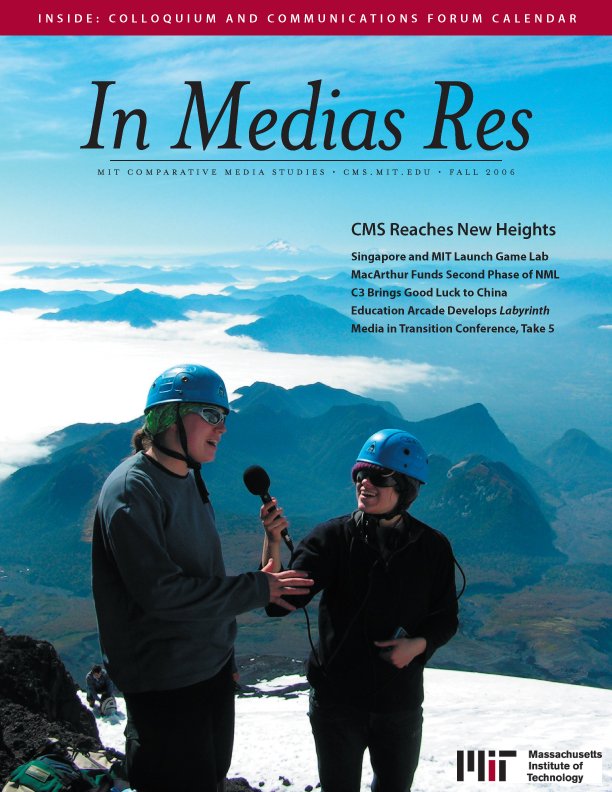

Seeya in the funny papers!
Well, now that you mention it, yes, Comparative Media Studies was recently seen in the comics section, thanks to Doonesbury creator Gary Trudeau. As regular readers know, Mike Doonesbury’s daughter started at MIT this fall and found herself lotteried out of a HAAS-D media studies class, which could, in reality, only be Introduction to Media Studies.
Of course, nobody at MIT should be surprised to see CMS referenced in the comics section – CMS has been all over the newspaper lately. We’re enjoying a wave of publicity at the moment – and the best is yet to come.
Breaking News: Singapore Gaming Agreement Inked
The biggest news is the completion of an agreement between Singapore’s Media Development Authority (through the National Research Foundation) and the administration of MIT to launch a new laboratory focused on promoting innovation in computer and video games.
The five-year initiative will involve CMS in collaborations with the MIT Computer Science Program and an array of universities and polytechnics within Singapore. This project aims to promote innovation, creativity, and diversity in game design, pushing the work we have been doing through the years in the Education Arcade, the Electronic Arts Creative Leaders Program, and the SONY IAP workshops to the next level.
We will at the same time move our games-related research into a global context where we will see ongoing collaboration with top games industry professionals, researchers, and students from around the world. This news broke too late to be covered extensively in this issue but we hope to offer a more detailed report soon.
Enormous Opportunities
MIT recently announced plans to move forward with the construction of the long-delayed Media Lab annex building with the promise that CMS will join Media Arts and Sciences, the Center for Advanced Visual Studies, and other media-related programs at MIT within the new Media Lab complex. Bringing these various programs together will create enormous opportunities for collaboration and social interactions among groups previously held apart by their scattered locations.
CMS is apt to generate even more headlines with the release of the white paper that Project NML has developed for the MacArthur Foundation. The paper, “Confronting the Challenges of Participatory Culture: Media Education for the 21st Century,” was written by Henry Jenkins with support from Ravi Purushotma, Margaret Weigel, Katie Clinton and Alice Robison.
The C3 consortium is also likely to generate a fair amount of buzz later this term when it plays host to a conference on the Futures of Entertainment, which brings together key players from new and old media companies to explore such emerging trends as user-generated content, digital distribution of television, and transmedia extensions.
This issue of In Medias Res shows a range of other CMS-related breakthroughs: the unveiling of plans for Labyrinth, the flagship project of Learning-Games-To-Go; the move of Metamedia towards increased focus on social tagging and the semantic web; the call for submissions to the fifth (count them, five!) Media in Transition Conference focused on “Creativity, Ownership, and Collaboration in the Digital Age”; news of a CMS research group (Project Good Luck) and its efforts to better understand the way media is impacting China; the release of Henry Jenkins’s new book, Convergence Culture: Where Old and New Media Collide, and so much more.
To make all of this happen now requires an army of faculty, administrative and research staff, post-docs, graduate students, and visiting scholars. Many of them are profiled across this issue. The vast majority of the people who are making CMS work on a day-to-day basis now were not here a year ago: most of the job lines did not exist then.
What a difference one year can make in the life of a program and what a difference this coming year will make in the life of ours!



